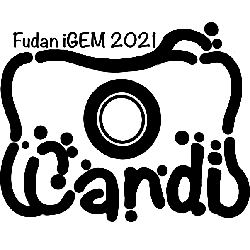Part:BBa_K3790009
The simplest form of csiD promoter, a weak σS promoter
Introduction
RNA polymerase in E. coli. relies on combined with σ factors to recognize promoter sequences. Although σ70 factor is responsible for the transcription of most of the genes in the genome. E. coli has other six kinds of alternative σ factors that are triggered in stressful conditions. By switching σ factors, bacteria can dramatically change the whole transcription pattern in order to express specific proteins to help themself survive in a bad day.
Among the six alternative σ factors, σS factor recognizes DNA sequences that are very similar to the typical promoter sequences recognized by σ70. Therefore, it is thought that σS promoters rely on upstream elements[1], which are protein-binding DNA sequences distributed upstream, to show their dependence on σS factors.
We noticed that there’s no standard nor well-characterized σS promoter in the registry. Therefore, we tested the core regions of several σS promoters and examined where they can be recognized by σS factors independently. Among them, the core region of the promoter controlling the expression of csiD in E. coli shows low strength as a σS promoter.
Contents
Usage and Biology
The sequence of this part shows relatively high transcription promoting activity in stressful conditions, such as carbon starvation. Typically, the expression of protein regulated by this part will be dramatically enhanced when bacterial growth reaches a plateau. At that time, σS can help efficiently expressing proteins when the density of bacteria in culture is super high.
WT T7 phage naturally has a gene product (gp) 5.7 (Z0141, K3790050), that acts as an efficient inhibitor of σS-dependent transcription. We image we could develop a circuit simultaneously controls the expression of all the proteins whose transcription is regulated by the expression of gp5.7.
Worth to Notice
This part is the simplified form of csiD promoter. It’s short and functions as a σS promoter independently. It can be freely fused with other regulatory parts, such as operators, to create parts with novel properties.
Characterization
Growth Curve and GFP Concentration
Reference
- ↑ What makes an Escherichia coli promoter sigma(S) dependent? Role of the -13/-14 nucleotide promoter positions and region 2.5 of sigma(S). Becker G, Hengge-Aronis R. Mol Microbiol, 2001 Mar;39(5):1153-65. PMID:11251833
Sequence and Features
- 10INCOMPATIBLE WITH RFC[10]Illegal XbaI site found at 20
- 12COMPATIBLE WITH RFC[12]
- 21COMPATIBLE WITH RFC[21]
- 23INCOMPATIBLE WITH RFC[23]Illegal XbaI site found at 20
- 25INCOMPATIBLE WITH RFC[25]Illegal XbaI site found at 20
- 1000COMPATIBLE WITH RFC[1000]
| None |


